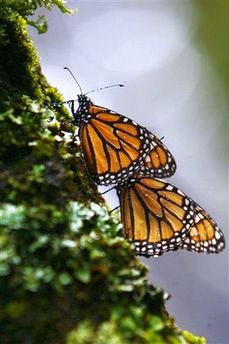
Mexico City – Monarch butterfly populations at their wintering sites in Mexico experienced a significant decline this year, dropping by 59% compared to previous records. This marks the second-lowest level since monitoring began, with experts attributing the decline to heat, drought, and habitat loss.
The annual migration of monarch butterflies from Canada and the United States to Mexico and back is renowned as a natural marvel. Notably, no individual butterfly survives the entire journey.

Instead of counting individual butterflies, the annual assessment measures the collective area they occupy when clustering on tree branches within the mountain pine and fir forests to the west of Mexico City. These forests serve as the overwintering grounds for monarchs originating from east of the Rocky Mountains in North America.
According to the latest report from Mexico’s Commission for National Protected Areas, the butterflies covered an area equivalent to 2.2 acres (0.9 hectares) this year, a significant decrease from the 5.4 acres (2.21 hectares) recorded last year. The lowest level on record occurred in 2013, registering at 1.65 acres (0.67 hectares).
Experts point to rising temperatures and drought as the primary drivers of the decline, echoing concerns that climate change poses a significant threat to the intricate migration cycle. “It has a lot to do with climate change,” noted Gloria Tavera, conservation director for the commission.
Interestingly, some tradicional wintering grounds observed almost no butterflies, suggesting a shift towards higher, cooler mountain regions. This relocation, while potentially beneficial for the butterflies, further complicates population estimates as many of these new sites remain outside the official count.
While the immediate risk of extinction may not be present, the long-term viability of the migration itself remains a pressing concern. This journey, the longest known for any insect species, faces numerous hurdles across its vast range. Threats include habitat loss, particularly of milkweed essential for egg laying, as well as pesticide and herbicide use in both North America and Mexico.
Recognizing the gravity of the situation, Humberto Peña, head of Mexico’s protected areas, has proposed the creation of a “safe corridor” encompassing both the United States and Canada. This initiative aims to mitigate threats through reduced pesticide and herbicide use, stricter deforestation measures, and enhanced protection of milkweed habitats.
The future of the monarch butterfly migration hangs in the balance, calling for urgent action and international cooperation to safeguard this remarkable natural phenomenon.




